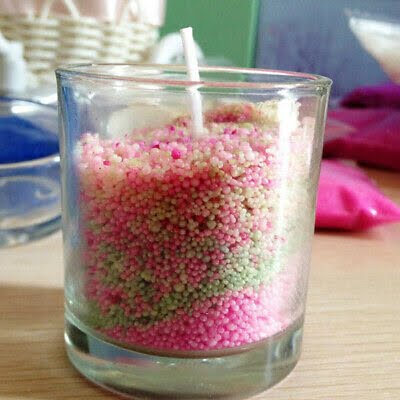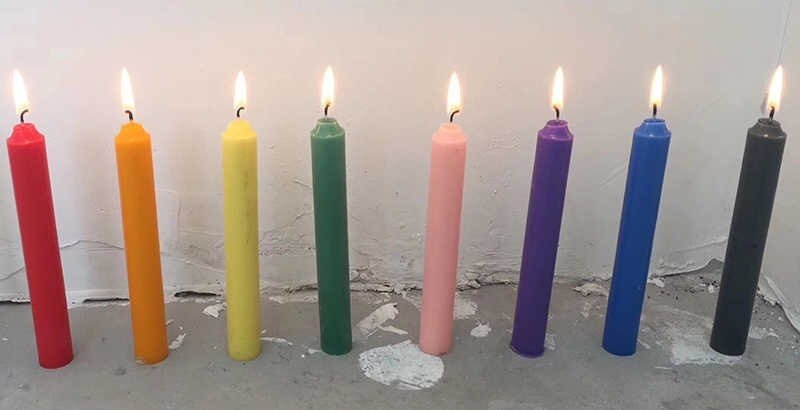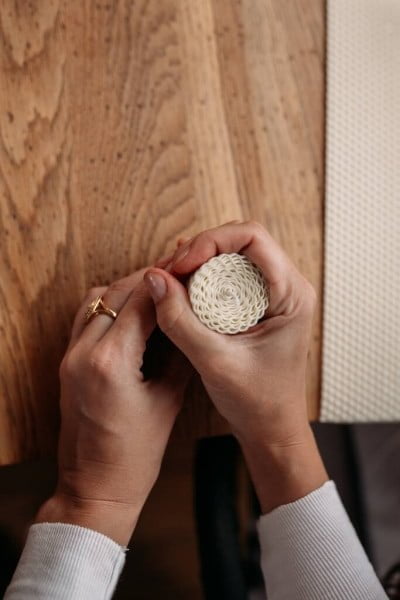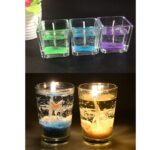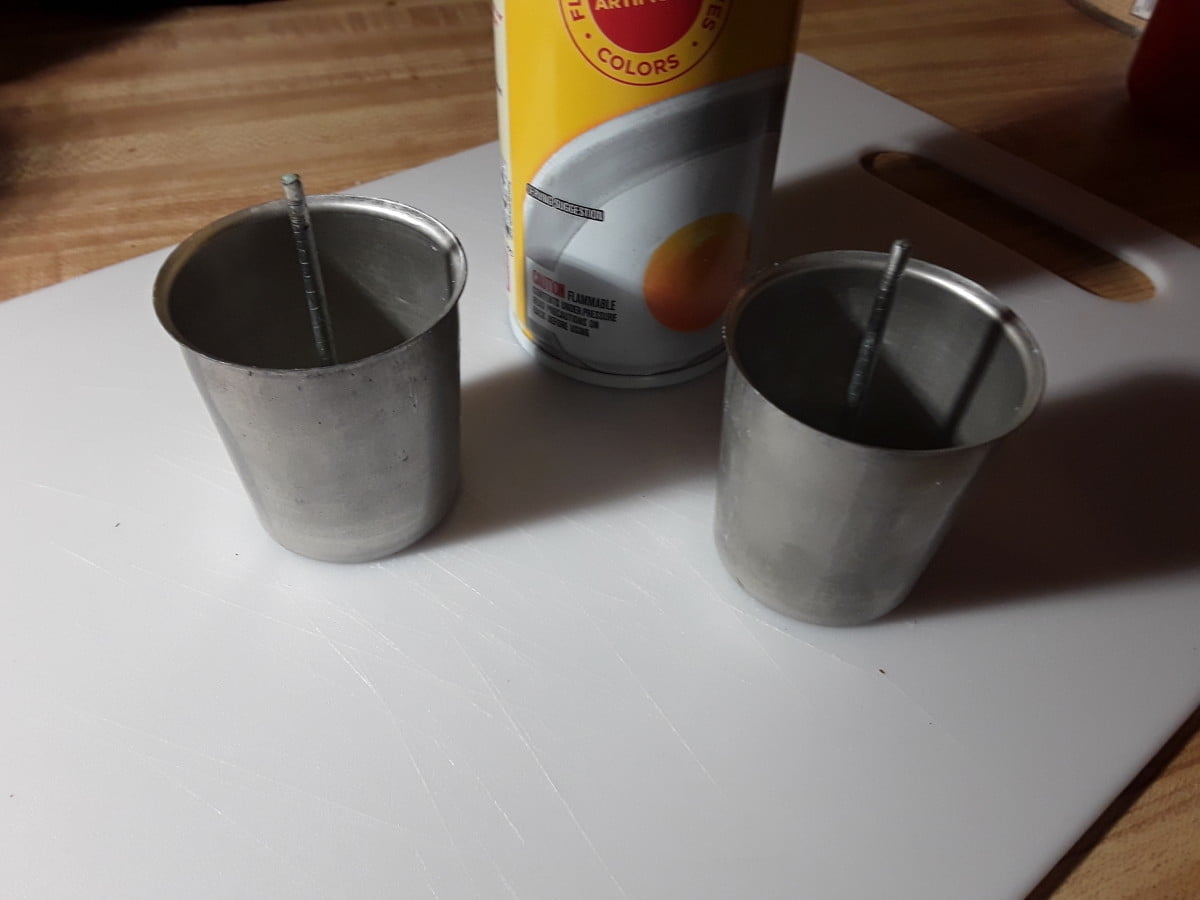Pour temperature is a critical factor in candle making, as it greatly affects the quality and characteristics of the final product. Understanding the importance of pour temperature is essential for candle makers who strive to create high-quality candles that not only burn well but also maintain their fragrance and aesthetic appeal. In this article, we will delve into the significance of pour temperature, exploring its impact on various aspects of candle making.
To comprehend why pour temperature matters, it is crucial to first grasp the concept itself. Pour temperature refers to the specific temperature at which the melted wax is poured into the container or mold. This seemingly small detail plays a significant role in determining the outcome of a candle. It influences not only how the wax solidifies but also how it interacts with fragrance oils, creates unique designs or textures, and even affects burn behavior.
In this article, we will dive deeper into why pour temperature matters in candle making. We will explore both the scientific and artistic aspects that are influenced by this variable. By understanding and mastering pour temperature techniques, candle makers can elevate their craft to new levels of excellence and creativity. So let us delve into the world of pour temperatures and discover its transformative power in creating beautiful candles.
The Science Behind Pour Temperature
When it comes to candle making, pour temperature plays a vital role in determining the quality and characteristics of the final product. Understanding the science behind pour temperature is crucial for achieving high-quality candles that burn evenly, have a strong scent throw, and boast a flawless finish.
At its core, candle making is a science that involves the manipulation of wax molecules. Wax – typically made from hydrocarbons – is solid at room temperature but melts when heated. The molecular structure of wax consists of long chains of carbon atoms surrounded by hydrogen atoms. When heat is applied, these chains begin to loosen and separate, turning the solid wax into a liquid.
During the pouring process, heat is transferred to the surrounding air as the liquid wax cools down and solidifies again. This process is known as convection cooling. The rate at which this cooling occurs depends on various factors, including ambient temperature and pour temperature.
Pour temperature directly affects the behavior of wax molecules during convection cooling. If wax is poured at too high of a temperature, it can result in excessive shrinkage and surface imperfections such as sinkholes or cracks. On the other hand, pouring wax at too low of a temperature may lead to poor adhesion between layers or difficulty in achieving smooth surfaces.
To achieve optimal results, candle makers must find the right balance between pour temperature and cooling rate. Different waxes have varying ideal pour temperatures based on their composition and molecular structure. Experimentation with different pour temperatures can help candle makers understand how their chosen wax behaves under different conditions and optimize their techniques accordingly.
By delving into the chemistry behind candle making and recognizing the impact of pour temperature on wax behavior, candle makers can create candles with superior aesthetics, excellent scent throw, and consistent burn characteristics. The science behind pour temperature empowers candle makers to fine-tune their craft and enhance their artistic expression through experimental techniques.
The Role of Pour Temperature in Scent Throw
When it comes to creating candles with captivating scents, the pour temperature plays a crucial role in enhancing fragrance performance. Scent throw refers to the strength and longevity of the fragrance released by a candle when it is lit. By understanding the relationship between pour temperature and scent diffusion, candle makers can achieve optimal results in terms of both aroma and customer satisfaction.
One way that pour temperature affects scent throw is through the rate at which fragrance molecules are released into the air. When wax is poured at a higher temperature, it tends to cool more slowly, allowing for a longer time period for fragrance oils to evaporate and disperse into the surrounding environment. This slower cooling process can result in a more gradual release of scent, leading to a longer-lasting and more consistent aroma throughout the life of the candle.
On the other hand, pouring wax at a lower temperature causes it to cool more rapidly, trapping fragrance molecules within the wax before they have a chance to fully diffuse. This can prevent the scent from spreading effectively when the candle is lit, resulting in weaker fragrance performance and shorter burn times. Therefore, finding the right balance between high and low pour temperatures is essential for achieving optimum scent throw.
To maximize fragrance performance, candle makers can follow a few key techniques regarding pour temperature. Firstly, understanding the specific type of wax being used is important as different waxes have different optimal pour temperatures. For example, soy wax typically performs well when poured around 135°F (57°C), while paraffin wax may require slightly higher temperatures.
Additionally, environmental factors such as room temperature should be taken into consideration when determining pour temperature. A warmer room may require lower pouring temperatures to compensate for faster cooling rates. Similarly, specific candle designs or shapes may require adjustments in pour temperature in order to ensure proper scent diffusion throughout the entire burn.
By paying attention to pour temperature and its impact on scent throw, candle makers can create candles that not only look visually appealing but also delight the senses with their captivating fragrances. Understanding the science behind pour temperature and implementing appropriate techniques will help ensure that every candle has a flawless finish and delivers an enchanting aroma that customers will love.
Understanding the Impact on Candle Aesthetics
When it comes to candle making, pour temperature plays a crucial role in achieving a flawless finish and enhancing the overall aesthetics of the candles. The temperature at which wax is poured can have a significant impact on various visual aspects, including smoothness, surface imperfections, and the ability to create unique designs or textures.
One of the key visual factors affected by pour temperature is the smoothness of the candle’s surface. When wax is poured at an optimal temperature, it has enough time to cool and solidify evenly, resulting in a smooth and professional-looking finish.
On the other hand, pouring at too high of a temperature can cause the wax to cool rapidly, leading to uneven surfaces, air pockets, or even sinkholes. Similarly, pouring at too low of a temperature can result in a rough or grainy texture.
In addition to smoothness, pour temperature also affects the formation of surface imperfections such as cracks or frosting. Pouring at excessively high temperatures increases the likelihood of these imperfections due to rapid cooling and contraction of the wax. Frosting, which appears as a white powdery film on candles, is particularly common when pouring certain types of waxes at lower temperatures. However, some candle makers intentionally use frosty finishes for aesthetic purposes.
Achieving unique designs or textures in candles is another benefit of understanding pour temperature’s impact on aesthetics. By manipulating pour temperature and pouring techniques such as layering or swirling, candle makers can create visually captivating patterns or effects within their candles.
For example, pouring wax at slightly different temperatures can result in gradual color gradients or marbling effects when two colors mix together. These artistic possibilities make pour temperature an essential consideration for those looking to push boundaries and unleash their creativity in candle making.
| Visual Aspects | Impacted by Pour Temperature |
|---|---|
| Smoothness | Pouring at optimal temperature results in a smooth finish, while pouring at too high or low temperatures can lead to uneven surfaces. |
| Surface Imperfections | Pouring at excessively high temperatures can cause cracks or frosting, while lower temperatures can result in a rough texture. |
| Unique Designs and Textures | Varying pour temperature and employing different techniques allow for the creation of special effects and visually captivating patterns. |
Avoiding the Dangers of High Pour Temperatures
When it comes to candle making, maintaining the appropriate pour temperature is crucial for achieving optimal results. Pour temperature refers to the temperature at which melted wax is poured into the container or mold to create a candle. While it may be tempting to use high pour temperatures for faster production, it is important to understand and avoid the dangers associated with excessive heat.
The Risks of High Pour Temperatures
Pouring candles at excessively high temperatures can lead to what is commonly known as wax meltdown. This occurs when the heat causes the wax to become too thin and unstable, resulting in leakage or deformation of the candle. Not only does this affect the appearance of the finished product, but it can also pose safety hazards.
When wax melts too much during pouring, it may seep through any gaps or imperfections in the container or mold, causing leakage onto surfaces or even sparking a fire if exposed to an open flame. Additionally, high pour temperatures can cause warping or distortion of the candle shape as the hot wax cools and solidifies unevenly.
Tips for Maintaining a Safe Pour Temperature
To prevent wax meltdown and ensure safe candle making, there are several tips that can help you maintain an appropriate pour temperature:
- Use a thermometer: It is essential to monitor the temperature of your melted wax using a thermometer specifically designed for candle making. Avoid guessing or relying solely on visual cues, as this can lead to inaccuracies.
- Follow manufacturer guidelines: Different types of waxes have recommended pour temperature ranges specified by their manufacturers. Always refer to these guidelines for best results.
- Practice patience: While higher pouring temperatures may seem more convenient, taking your time and allowing the wax to cool slightly before pouring will yield better outcomes in terms of both aesthetics and safety.
- Consider ambient conditions: The ambient temperature and humidity in your workspace can also affect pour temperature. Hot weather or a heated environment may require lower pour temperatures to compensate for the external heat.
By taking these precautions and paying attention to pour temperature, candle makers can avoid the dangers associated with wax meltdown and create candles that are both visually appealing and safe for use.
The Art of Perfect Pour Temperature
One of the key factors in achieving high-quality candles is the pour temperature. The art of perfect pour temperature involves finding the ideal temperature for specific waxes and candle designs, taking into account environmental factors and desired outcomes. Candle makers can employ different techniques to determine the optimal pour temperature and enhance their candle making process.
One technique for determining the ideal pour temperature is conducting test pours. This involves pouring small amounts of wax at varying temperatures to observe how each pour affects the final outcome of the candle. By systematically adjusting pour temperatures and recording the results, candle makers can pinpoint the temperature that produces the best results for their specific wax and desired candle characteristics.
Another technique is using a thermometer throughout the melting and pouring process. Monitoring and controlling the temperature at each stage ensures that the wax is heated to an appropriate level before pouring. This method is particularly crucial when working with heat-sensitive waxes, as excessive heat can cause discoloration or other undesirable effects.
In addition to adjusting pour temperature based on experimentation and monitoring, candle makers must also consider external factors such as humidity, room temperature, and even altitude. Higher altitudes typically require lower pour temperatures due to lower atmospheric pressure, while high humidity levels may require higher temperatures to compensate for increased moisture absorption by the wax.
| Technique | Description |
|---|---|
| Test Pours | Pouring small amounts of wax at varying temperatures to observe how each pour affects final outcome |
| Thermometer Monitoring | Using a thermometer during melting and pouring process to control temperature |
| Considering External Factors | Taking into account humidity, room temperature, altitude, etc. when determining pour temperature |
Troubleshooting Common Pour Temperature Mistakes
When it comes to candle making, pour temperature plays a crucial role in achieving the desired results. However, sometimes mistakes can happen, leading to various problems in the finished candles. In this section, we will explore common pour temperature mistakes and provide solutions to resolve these issues.
One common problem related to pour temperature is tunnelling. Tunnelling refers to a hollow cavity that forms in the center of the candle while the outer wax remains unburned. This problem often occurs when candles are poured at too low of a temperature. To prevent tunnelling, make sure to heat your wax to the recommended pouring temperature specified by the manufacturer. This ensures that the entire candle is evenly heated and prevents any hollow cavities from forming.
Another issue that can arise from pour temperature is poor scent diffusion. The scent throw of a candle greatly depends on how well fragrance molecules are released into the air when the candle is burned. If you find that your candles have a weak scent or don’t release fragrance as expected, it could be due to pouring at too high of a temperature.
When wax is poured at excessively high temperatures, it can scorch or evaporate off some of the fragrance oils before they have a chance to bond with the wax. To enhance scent diffusion, try lowering your pour temperature slightly to allow for better fragrance retention and dispersion.
In addition to tunnelling and poor scent diffusion, surface imperfections can also result from incorrect pour temperatures. If you notice rough or uneven surfaces on your candles after they have cooled down, it may be due to pouring at too high of a temperature.
When wax is poured too hot, it can cause surface imperfections such as pitting or cracking. To achieve a flawless finish, make sure to pour your wax within the recommended temperature range specified by your chosen wax type.
By understanding and troubleshooting common pour temperature mistakes, you can resolve issues that may arise during candle making and produce high-quality candles. Remember to follow the recommended pouring temperatures provided by your wax manufacturer and make adjustments based on your specific needs and preferences. With practice and attention to pour temperature, you can create beautifully crafted candles that showcase both aesthetic appeal and powerful fragrance performance.
Experimenting with Pour Temperature
When it comes to candle making, the pour temperature plays a crucial role in determining the final outcome of the candle. While maintaining the appropriate pour temperature is important for producing high-quality candles, it can also serve as an avenue for candle makers to push boundaries and unleash their creativity. By experimenting with different pour temperatures, artisans can achieve unique results and create candles that stand out from the rest.
Enhancing Aesthetics through Pour Temperature
One of the ways in which candle makers can utilize pour temperature to enhance the aesthetics of their creations is by creating textured or layered candles. By pouring wax at higher temperatures and allowing it to cool slightly before pouring another layer, artisans can achieve a multi-dimensional effect that adds depth and complexity to their candles. This technique is particularly effective when working with different colored waxes or incorporating decorative elements such as dried flowers or glitter.
Furthermore, manipulating the pour temperature during the cooling process can result in interesting designs on the surface of candles. For instance, pouring wax at a lower temperature allows for more control over the flow and enables artisans to create intricate patterns or marbling effects. On the other hand, pouring at a higher temperature may lead to a smooth surface with minimal imperfections, perfect for achieving a sleek and modern aesthetic.
Creating Special Effects with Pour Temperature
In addition to enhancing aesthetics, experimenting with pour temperature opens up opportunities for candle makers to create special effects in their candles. One popular technique is known as “cratering,” where wax is poured at a high temperature into already cooled wax. This creates unique craters or dimples on the surface of the candle that add visual interest and texture.
Another creative application of pour temperature is layering scents within a single candle. By pouring multiple layers using different scents at various temperatures, candle makers can create candles that release different fragrances as they burn. This technique is often used to create complex and layered scents that evolve over time, providing a captivating sensory experience for the user.
Conclusion
In conclusion, the choice of pour temperature has a significant impact on the quality and characteristics of candles. Throughout this article, we have explored the science behind pour temperature and its influence on various aspects of candle making. From scent throw to aesthetics, understanding and utilizing the right pour temperature can elevate the art of candle making to new heights.
By comprehending the molecular structure of wax and how heat affects it during the pouring process, candle makers can achieve flawless finishes and enhance fragrance performance. The relationship between pour temperature and scent diffusion is particularly crucial in creating candles with strong and long-lasting fragrances. Additionally, pour temperature directly correlates with visual aspects such as smoothness and surface imperfections, allowing for unique designs or textures in candles.
It is important to note that excessively high pour temperatures can pose risks such as wax leakage or deformation. However, by following tips on maintaining a safe pour temperature, candle makers can avoid these dangers and ensure a smooth pouring experience. Different techniques are available to determine the ideal pour temperature for specific waxes, and adjustments can be made based on environmental factors or desired candle designs.
In the world of candle making, experimenting with different pour temperatures opens up endless possibilities for creativity. By pushing boundaries and exploring new techniques, candle makers can achieve unique results such as special effects or layered candles. The revitalizing power of choosing the right pour temperature lies in its ability to not only enhance the quality but also unleash artistic expression.
Frequently Asked Questions
Why is pouring temp important for candles?
Pouring temperature is important for candles because it directly influences the quality and performance of the finished product. When pouring candles, the wax needs to be at the right temperature to achieve optimal results. If the temperature is too low, the candle may not fill the container properly, resulting in uneven burns and poor scent throw.
On the other hand, if the temperature is too high, it can cause shrinkage, cracking, or even melting of the container. Therefore, precise control of pouring temperature is crucial in order to achieve a consistent and desirable end product.
What is the best temperature to pour candles?
The best temperature to pour candles depends on the type of wax being used. Different waxes have different melting points and ideal pouring temperatures. Generally speaking, most candle manufacturers recommend pouring temperatures between 120°F (49°C) and 160°F (71°C).
Soy wax typically has a lower melting point and can be poured at lower temperatures around 120°F (49°C) to 140°F (60°C). Paraffin wax has a higher melting point and requires higher pouring temperatures ranging from 150°F (66°C) to 160°F (71°C). It’s essential for candle makers to follow specific instructions provided by wax suppliers or conduct their own experimentation to determine the optimal pouring temperature for their chosen wax.
How does temperature affect candle wax?
Temperature greatly affects candle wax during both its melting phase and after it solidifies as a finished candle. When heating the wax to melt it down, raising the temperature allows it to become more fluid so that it can blend evenly with fragrance oils or dyes added for customization purposes.
Once poured into a mold or container, cooling gradually occurs which solidifies the liquid wax into a solid candle form we are familiar with.

Welcome to my candle making blog! In this blog, I will be sharing my tips and tricks for making candles. I will also be sharing some of my favorite recipes.

